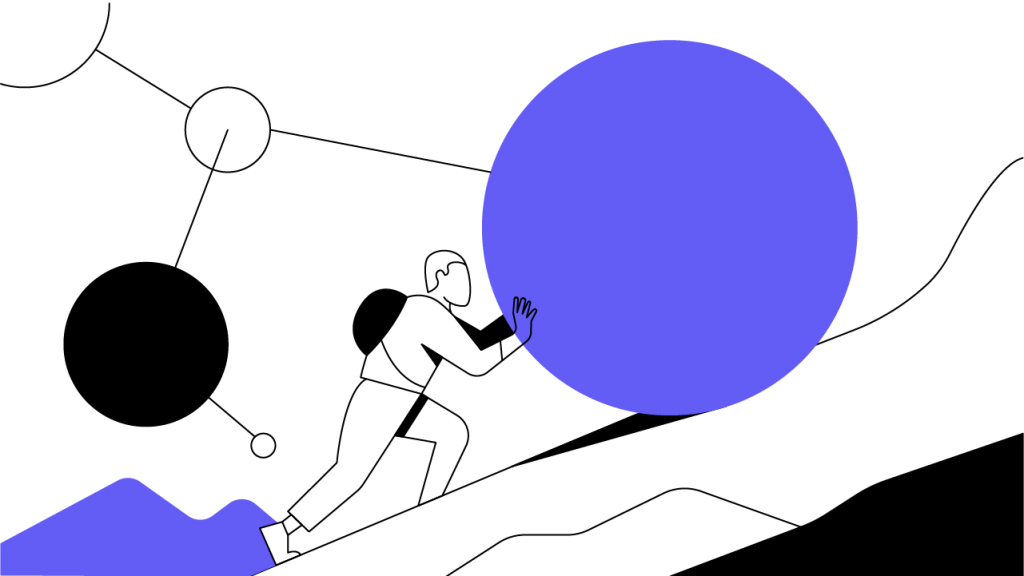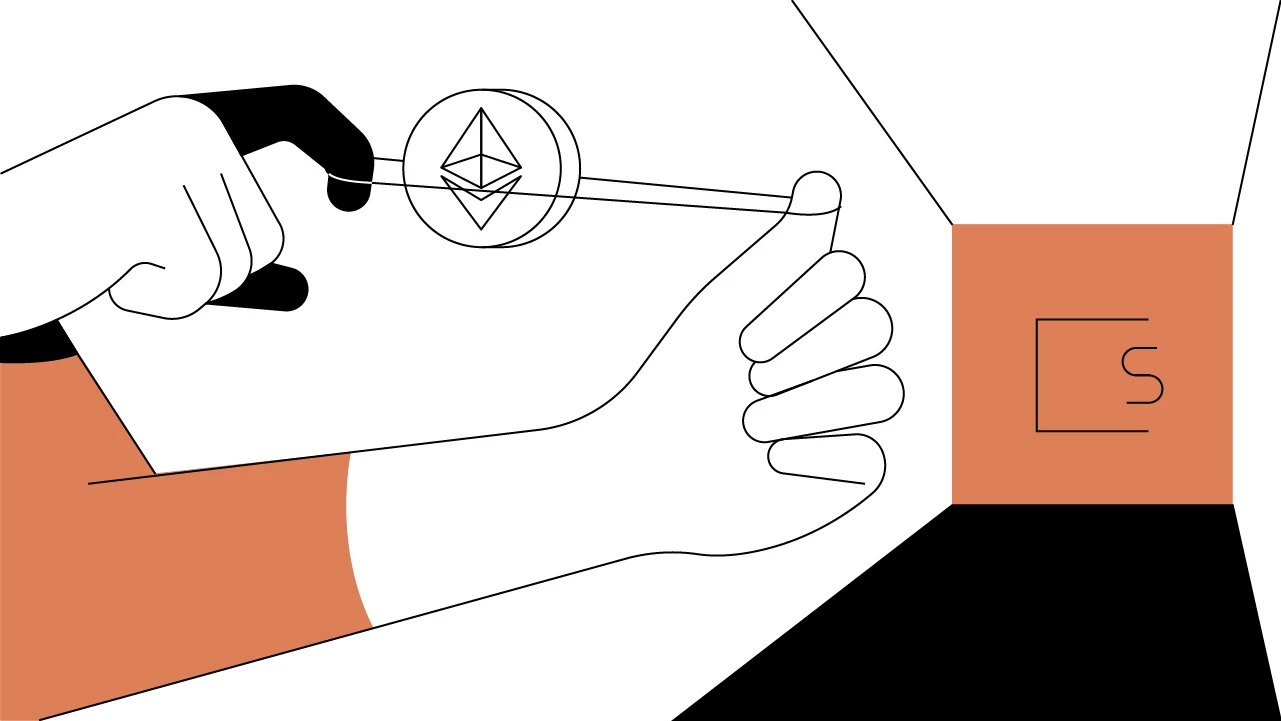Contents
Blockchain Scalability and Privacy: The Rollup Ecosystem
Rollups can move computationally intensive processes to a sidechain to ease congestion on the mainchain while stabilizing network fees and transaction speeds.
Updated February 26, 2025 • 5 min read

Summary
Although decentralized networks may present several advantages over centralized architecture, a lack of scalability remains a consistent challenge for many blockchain projects. While a growing user base is desirable, increased network congestion can drive up transaction fees and slow throughput, negatively impacting the user experience. In response to this challenge, companies have begun to explore scalability solutions like Optimistic Rollups (ORs) and Zero-Knowledge Rollups (zk-Rollups). These cryptographic proofs are designed to move computationally intensive processes to a sidechain to ease congestion on the mainchain, stabilizing network fees and transaction speeds. While many rollup protocols function similarly, each project aims to serve a unique segment of users across the blockchain ecosystem. The pursuit of scalability and privacy continues to drive rollup integrations, which also facilitate other cryptographic processes such as Secure Multi-Party Computation (SMPC).
What Is a Rollup?
Rollups are regular smart contracts on the Ethereum mainnet that serve as the relay between the mainchain and Layer 2, where computations occur. Rollups have become a popular Layer-2 scaling solution for blockchain networks. These protocols store transaction data on the mainchain but move transaction activity to a sidechain. However, because the mainchain and sidechain are interoperable, they run in parallel and continue to communicate. As a result, blockchain networks become more scalable as computationally intensive processes move off the mainchain, which reduces congestion.
Unlock the future of money on Gemini
Start your crypto journey in minutes on the trusted crypto-native finance platform
For example, the Ethereum mainchain is currently capable of processing 15 transactions per second (TPS). By implementing rollups, this number can reach up to 1,000 TPS, as only critical smart contract data is communicated back to the mainchain and the majority of data remains on the sidechain. The term "rollup" refers to the process of rolling transactions into a single block before publishing the validated transactions to the mainchain.
Across the blockchain ecosystem, several projects are integrating rollup infrastructure with sidechains to create secure, privacy-preserving protocols. In doing so, they aim to balance the competing priorities outlined by the Blockchain Trilemma: security, scalability, and decentralization.
What Is a zk-Rollup?
Zero-Knowledge Rollups (zk-Rollups) leverage the core functionality of rollups through the integration of sidechains. In general, sidechains allow one party to prove to another that a transaction is valid without revealing any information beyond the validity of the transaction itself. In the context of blockchain transactions, sidechains can reduce the computing and storage resources necessary to validate a block of transactions once published to the mainchain. Transaction verification is still possible because zero knowledge of the entire data is required. In other words, the sidechain has already verified each transaction, so transactions are automatically valid on the mainchain. More specifically, zk-Rollup protocols facilitate transactor and relayer interactions:
Transactors create and broadcast their transaction data to the network. This information includes an indexed "to" and "from" address, transaction value, network fee, and number only used once (nonce). The indexed addresses reduce processing resources, and the transaction value generates a deposit and withdrawal amount. Smart contracts then record addresses to one Merkle Tree and the transaction value to another.
Relayers are responsible for collecting transactions creating rollups. Relayers generate a Zero-Knowledge Succinct Non-Interactive Argument of Knowledge (zk-SNARK) proof that compares the blockchain state before and after each transaction (i.e., wallet balances). The resulting changes reach the mainchain in a verifiable hash. Although practically anyone can act as a relayer, they must first stake their cryptocurrency in a smart contract, incentivizing them to act in good faith.
Features and Applications of zk-Rollups
Using zk-Rollups, you can support a wide variety of functionalities for fungible tokens, non-fungible tokens (NFTs), and decentralized applications (dApps).
Hermez
The Hermez platform utilizes zk-Rollups to optimize low-cost, secure token transfers on the Ethereum blockchain. During the transfer process, funds are held in a smart contract on the mainchain while zk-SNARK cryptographic proofs originate off-chain. These zk-SNARKs help verify each batch of transactions recorded to the mainchain, easing network congestion and enabling consistent processing speeds. Furthermore, because all transactions record on the mainchain, anyone can reconstruct the current state and history of transactions. This dynamic helps mitigate censorship and the centralization of zk-Rollup coordinations that batch transactions. In 2021, Hermez was acquired by the popular Ethereum Layer-2 scaling project Polygon (MATIC).
Immutable X
The Immutable X team built its protocol to optimize minting and trading Ethereum-based NFTs. The protocol aims to provide users with instant trade confirmations, improved scalability, and no gas fees — all while remaining non-custodial. Through the use of zk-Rollups, Immutable X moves thousands of transactions off the mainchain and publishes the resulting proof to the mainchain, where a smart contract verifies transactions. Like many other protocols, user assets are held in a mainchain smart contract until valid proof is published.
DeversiFi Launch Market (DLM)
In addition to providing a decentralized exchange (DEX) protocol, DeversiFi has also introduced DeversiFi Launch Markets (DLM). These markets integrate reverse auction elements and continuous liquidity to establish token market prices through participation. As DLMs originate on Layer 2, there are no gas fees, and participants retain complete control of their funds.
zkSync
Coming from the Matter Labs team, zkSync functions as an Ethereum Layer-2 scaling solution that lowers gas fees resulting from transactions on the network. Through zk-Rollup infrastructure, ether (ETH) and ERC-20 tokens are held by a smart contract on the mainchain, while computational storage occurs off-chain. Similar to other value transfer protocols, zk-SNARKS are generated and verified by the mainchain contract. As with alternative protocols, these zk-SNARKs validate every transaction in a specific rollup block, and the resulting data is publicly available.
Aztec
The Aztec protocol utilizes two encoded zk-SNARK “circuit" programs: a privacy circuit and a rollup circuit. The privacy circuit ensures the accuracy of a single transaction and sends transactions directly from user hardware to preserve privacy. The rollup circuit is responsible for validating the accuracy of each batch of proofs, currently set at 128 each. The rollup circuit also maintains a database of encrypted transaction data. Although all the zk-Rollup proofs in use are now generated by Aztec, the company plans to decentralize this service by outsourcing computation to a third party. Regardless of the eventual service provider, they will only see encrypted privacy proof outputs, eliminating censorship attacks as all transactions will appear as random numbers.
What Is an Optimistic Rollup?
While zk-Rollups have become fairly common, many projects have also begun to explore the use of Optimistic Rollups (ORs) on blockchain networks. Like zk-Rollups, ORs are a Layer-2 solution that runs parallel to the Ethereum mainchain. However, unlike zk-Rollups, ORs only publish the bare minimum of information to the mainchain, generating proofs only in fraud cases — a dynamic that makes them “optimistic.” As such, zk-Rollups are sometimes referred to as “validity proofs,” while ORs are known as “fraud proofs.” Like zk-Rollup relayers, practically anyone can become an aggregator by locking a bond in the OR smart contract. Here’s how the entire process works:
When users send transactions to off-chain Optimistic Rollups, aggregators sign up, and fraud proofs are committed.
The aggregator deploys the transaction locally to generate a new smart contract. After computing the new state root (Merkle root), the aggregator sends the transaction and state root back to the mainchain.
If users believe that an aggregator has returned a fraudulent state root, including an invalid transaction, they can challenge the aggregator.
Users can register this challenge by posting the correct state root and the Merkle proofs necessary to validate it.
The offending aggregator, and any that built on top of the invalid block, will see their bond slashed, with those proceeds going to the reporting user.
Once an invalid block has been identified and a fraud proof is complete, the Layer-2 chain rolls back, resuming at the previous non-fraudulent block. While some believe ORs afford greater oversight, others point to the following challenges:
Invalid state: ORs allow for the existence of an invalid blockchain state. As a result, an invalid state can exist until proof of fraud is submitted, which may never occur.
Security: Due to their game-theory-based model, ORs may be more vulnerable to attack. Because users can engage in reporting fraud, there are more opportunities for adverse outcomes.
Scalability: In some cases, ORs may require more mainchain computational resources as transactions scale, leading to higher costs.
Examples of Top Optimistic Rollup Projects
Despite these challenges, many companies continue to explore the development of Optimistic Rollups, and the technology is rapidly improving. Below, we discuss some of the most notable OR projects.
Optimism Ethereum (OE)
Like other rollup solutions, Optimism Ethereum (OE) functions as a Layer-2 scaling protocol for Ethereum applications. In short, the platform emulates the Ethereum Virtual Machine (EVM) developer experience, making it easier to build and deploy compatible rollup solutions. In addition, according to OE documentation, the protocol supports existing Solidity smart contracts, off-chain wallets integrations, and user interfaces (UIs).
Arbitrum
Like other rollups, the Arbitrum Rollup chain exists on top of the Ethereum blockchain as a Layer-2 solution. In addition, Arbitrum enables a familiar developer and user experience by supporting the following features:
Ethereum remote procedure call (RPC) interface: The protocol uses the Ethereum communication protocol, ensuring compatibility with third-party integrations.
Full EVM support: Arbitrum has full support for the EVM, meaning all smart contract languages are compatible with the Ethereum mainchain.
Ethereum tooling: Similarly, the protocol utilizes frontend Ethereum tooling such as Truffle, Hardhat, The Graph, and ether.js, further integrating Arbitrum with Ethereum.
Collectively, these tools allow Arbitrum Rollup users to deploy smart contracts at a fraction of the cost without sacrificing security or decentralization.
Boba Network
The Boba Network is an Optimistic Rollup that merges open-source OE tools with the research and development of both OMG Foundation and Enya. The resulting platform utilizes Enya's privacy-preserving technology and the high-throughput and low fees of OMG Plasma. Boba relies on Secure Multi-Party Computation (SMPC), which enables collaborative data analysis without revealing sensitive data and makes it possible to conduct joint computations that keep data secure by retaining control over who receives verified outcomes. This structure is designed to support dApps that are fast, low-cost, and private. The Boba team chose to build on OE because the protocol is nearly identical to the Ethereum mainchain. As a result, EVM and Solidity compatibility persists, streamlining smart contract migration from Ethereum (Layer 1) to Boba (Layer 2). To introduce DAO governance to the Boba Network, the OMG Foundation is launching a Boba governance token (BOBA). As part of this initiative, holders of existing OMG receive BOBA at a 1:1 ratio via an airdrop, distributing the token to more participants and expanding the Boba ecosystem.
Cryptopedia does not guarantee the reliability of the Site content and shall not be held liable for any errors, omissions, or inaccuracies. The opinions and views expressed in any Cryptopedia article are solely those of the author(s) and do not reflect the opinions of Gemini or its management. The information provided on the Site is for informational purposes only, and it does not constitute an endorsement of any of the products and services discussed or investment, financial, or trading advice. A qualified professional should be consulted prior to making financial decisions. Please visit our Cryptopedia Site Policy to learn more.

Is this article helpful?


